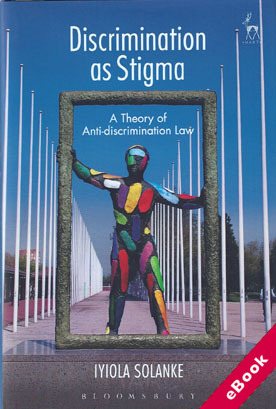We will be closed from 5pm Thursday 17th April for the Easter Bank Holidays, re-opening at 8.30am on Tuesday 22nd April. Any orders placed during this period will be processed when we re-open.

The device(s) you use to access the eBook content must be authorized with an Adobe ID before you download the product otherwise it will fail to register correctly.
For further information see https://www.wildy.com/ebook-formats
Once the order is confirmed an automated e-mail will be sent to you to allow you to download the eBook.
All eBooks are supplied firm sale and cannot be returned. If you believe there is a fault with your eBook then contact us on ebooks@wildy.com and we will help in resolving the issue. This does not affect your statutory rights.
This monograph contributes to understanding of anti-discrimination law and theory. It explores questions surrounding the logic of equality law and reviews current theoretical approaches to this area of law.
Using sociological theory, the author presents an anti-stigma principle and promotes it as a method to determine the scope of legal protection from discrimination.
The anti-stigma principle departs from structural stigma – structural stigma recognises the role of both individual and institutional action in the process of stigmatisation. In so doing, it offers a practical method to reconstruct anti-discrimination law so that it incorporates both individual and social responsibility.
In developing and applying the anti-stigma principle, the book draws upon case law from jurisdictions including the UK, USA and Canada, as well as wider international law.